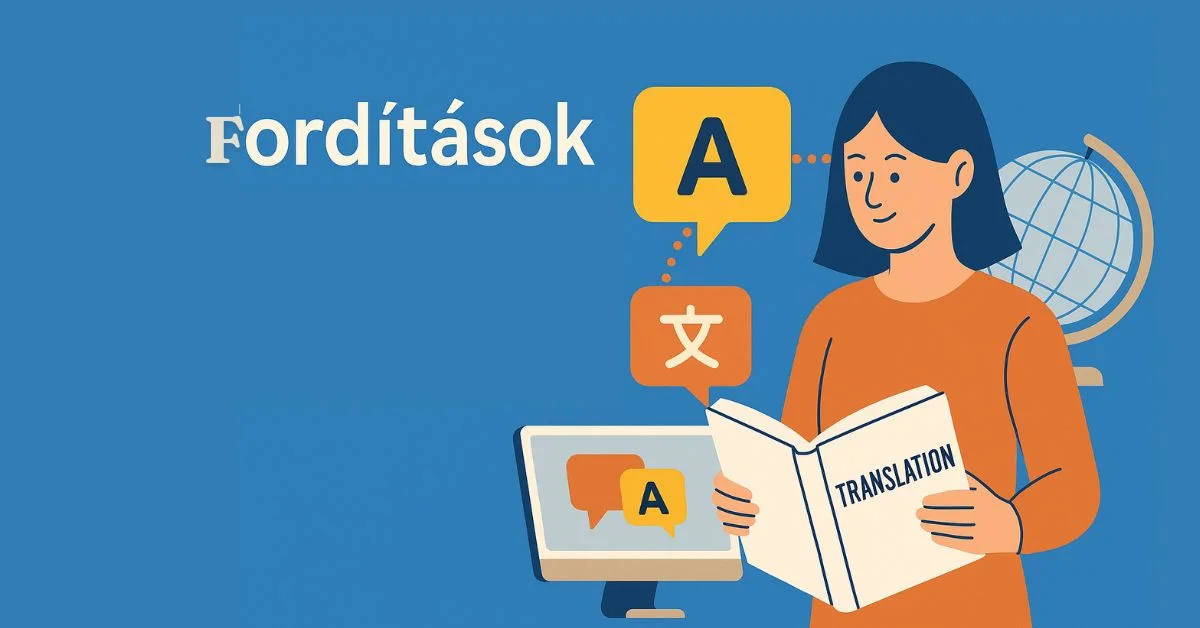Fordítások, a Hungarian term for “translations,” represents a dynamic field that not only bridges languages but also connects cultures, ideas, and peoples across the globe. In this comprehensive guide, we will explore every facet of fordítások—from its historical roots and linguistic significance to the latest trends and future challenges. Whether you’re a seasoned translator, a language enthusiast, or just curious about how words travel across borders, this article is for you. Let’s dive into the fascinating world of fordítások!
Introduction to Fordítások
Have you ever wondered how literature, legal documents, or even everyday conversation gets seamlessly transformed from one language to another? That’s the magic of fordítások. In a globalized world, effective communication is key, and translation plays a central role in ensuring that language barriers do not impede the exchange of ideas.
Fordítások is more than just converting words; it’s about capturing context, tone, and cultural nuances. As we explore this topic, we’ll see how translations evolve from simple word substitutions to a sophisticated craft that requires both linguistic prowess and deep cultural understanding.
Understanding the Meaning of Fordítások
At its core, fordítások means “translations” in Hungarian. But what does it really encompass?
Etymology and Linguistic Roots
The term fordítások has its roots in the Latin language, which has influenced many modern European languages, including Hungarian. Understanding the etymology gives us insight into how the concept of translation has been an essential tool in human communication for centuries.
Different Uses in the Hungarian Language
In Hungarian, fordítások can refer to a variety of translation contexts—from literary works to technical documents. The term embodies the art of converting meaning, ideas, and expressions from one language to another while preserving the original essence.
Importance of Fordítások in Global Communication
Why is translation so important in today’s interconnected world? The answer lies in its ability to foster understanding and collaboration on a global scale.
Cultural Exchange
Imagine a world without translation—cultural exchange would stall, and unique perspectives could remain locked within language barriers. Fordítások facilitates the sharing of literature, art, and philosophy across different cultures.
Economic Impact
Beyond culture, translation has a significant economic impact. Global businesses rely on accurate translations to enter new markets, negotiate international deals, and provide customer support in multiple languages.
Types of Fordítások
Translation isn’t a one-size-fits-all process. Different types of fordítások serve various needs across multiple industries.
Literary Translations
This type involves transforming novels, poems, and plays while capturing the author’s original voice, style, and intent. Literary translators must be both creative and faithful.
Technical Translations
Covering fields such as engineering, IT, medicine, and science, technical translations require precision and subject-specific knowledge.
Legal Translations
Legal documents demand exact language, as even a minor error can alter legal obligations or rights. Translators must be familiar with the relevant legal systems.
Machine Translations vs. Human Translations
Machine translations are fast and powered by AI but often lack context and nuance. Human translators provide a deeper cultural and idiomatic understanding. Often, the best results come from a blend of both.
The Process of Translation
Ever wondered what happens behind the scenes when a document is translated? The process involves multiple stages.
Comprehension and Interpretation
The translator must understand the source text, including its tone and target audience.
Translation and Localization
The text is then adapted, not just translated. This involves localizing idioms, jokes, and culturally specific references.
Proofreading and Quality Control
After translation, the text is reviewed for accuracy, grammar, and clarity. Multiple rounds of proofreading may be involved to ensure top quality.
Tools and Technologies for Fordítások
Technology has revolutionized how translations are done today.
Translation Software and Tools
Translation Memory systems and CAT tools help professionals by suggesting consistent phrasing and remembering previous translations.
AI and Machine Learning in Translation
AI enhances speed and scale, offering quick first drafts and enabling real-time translations. Human review is still vital for context and tone.
Challenges in the Translation Industry
Despite advancements, fordítások remains a challenging field.
Cultural Nuances and Idiomatic Expressions
Translating idioms or culturally rich content requires creativity and insight to maintain the original meaning.
Maintaining Accuracy and Context
Words can have multiple meanings. Accuracy and context are critical to avoid misinterpretation.
Future Trends in Fordítások
The future of fordítások is bright, with technology continuing to push boundaries.
Neural machine translation is improving rapidly, offering more context-aware results. Real-time translation services and better integration of language tools in daily communication are becoming the norm. Yet, human expertise in capturing tone, emotion, and cultural relevance will remain invaluable.
Conclusion
We’ve explored the world of fordítások from every angle—its history, types, process, tools, challenges, and future. Translation continues to be a crucial tool for global communication, cultural exchange, and economic expansion.
As the world becomes more interconnected, the role of translators and the innovations supporting them will only grow. The fusion of human skill and machine efficiency promises a future where language is no longer a barrier but a bridge to greater understanding.
FAQs
What exactly does the term “fordítások” mean?
Fordítások is the Hungarian word for “translations.” It refers to the process of converting text or speech from one language to another, ensuring that meaning, tone, and context are maintained.
How do machine translations differ from human translations?
Machine translations are generated by algorithms and are often fast but can lack nuance. Human translations, on the other hand, offer a deeper understanding of cultural context and idiomatic expressions.
What are some common challenges in the translation industry?
Common challenges include cultural nuances, idioms, and maintaining context and accuracy. Translators must often balance creativity with precision.
How is technology changing the field of fordítások?
Advances in AI and machine learning have led to improved translation tools like neural machine translation. These tools are faster and more consistent, though human input is still key for high-quality results.
What trends can we expect to see in the future of translations?
Expect more real-time translation services, deeper AI integration, and a stronger focus on localization—all making cross-cultural communication more seamless and effective.

